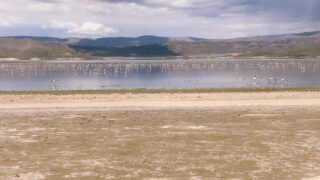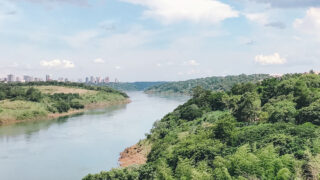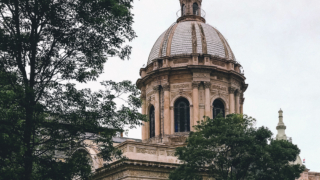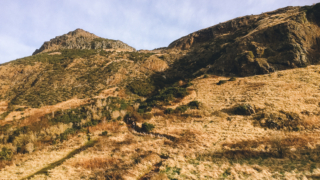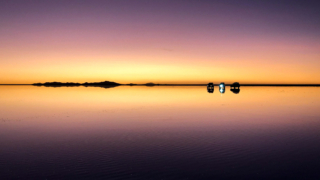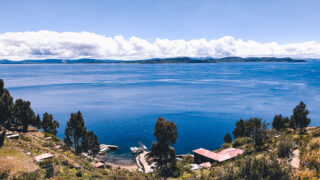One of Peru’s highlights is a dramatic, natural wonder slicing through the magical Andes Mountains. Colca Canyon, or Cañón del Colca, can be found within a 3-hour driving distance from one of Peru’s most beautiful cities, Arequipa. From there the stunning canyon can be visited as part of a day trip or explored within a few days. The canyon dramatically slices through the magical Andes Mountains for 100 km and at around 3,300 metres at its deepest, it is not only the world’s second deepest canyon but also nearly twice the depth of the Grand Canyon. Surprised it isn’t the world’s most famous gorge? Me too!
Let’s jump straight to the most commonly asked question. Is trekking Colca Canyon hard? Yes, but it is doable if you are fit and have survived a multi-day trek before without ending up on the back of a mule. Which is an option on this two to three-day trek. Or you can always opt for the one-day tour. With a maximum altitude of 3,700 metres reached during the trek, having acclimatised to high altitude is also highly advised.

Since this is a canyon it is no surprise that the trails all include a lengthy ascent and a brutal descent. Either way, the up and down hike is all worth it. When you admire the skilled Incan terraces carved into the steep mountain walls you start to understand the popularity of Cañón del Colca. The gritty canyon towering over you makes up for the sweat and hard work with stunning volcanic views on the way there, a river ripping through the dusty fields, hot springs, and Andean condors. You might even witness a woman crying as she spots the extraordinary wingspan of the world’s largest flying birds high in the sky. Read on to find out how to hike Colca Canyon as part of a tour, on your own, or how to visit the world’s second deepest canyon in a day. Read, plan, and explore.
Difficulty │ Easy – Intermediate
Duration │ 1, 2, or 3-Days
Entrance Fee │ SOL 70
Cost │ SOL 125 – 860+

Post Contents
COLCA CANYON GUIDED MULTI-DAY TREK
With a 3-am pick-up, this adventure might not be for everyone. The guided routes are the same as what you would be doing if you were to trek Colca Canyon on your own, apart from the trail averting the thermal baths and hot springs. Day one will be spent ascending the rocky path to spend the night in one of the villages surrounded by dusty, cacti landscapes. Following an early 5-am rise the hike continues to Colca Canyon’s most popular village, Sangalle. Here you can relax in the thermal baths before the long ascent out of the canyon the next day. There is also a possibility to complete this trek within two-days. To my awareness, the same route is being followed at a faster pace.
The Cost.
Prices starting at SOL 860 include transportation, entrance fee, accommodation, and meals.
TREKKING COLCA CANYON ON YOUR OWN
While there are a lot of Colca Canyon tours, the canyon can easily be explored without a guide. The trails are signposted well and due to the popularity of Colca Canyon, you shouldn’t find yourself on your own for too long at any time. There are different routes to choose from depending on your fitness level and desired hiking distance. There are several two-day treks for anyone pressed for time and three-day treks for anyone looking to make the most of this magical canyon. I recommend the three-day hike since the journey from Arequipa to Cabanaconde is time-consuming and exploring the canyon will be tiring.
Two-Day Trek.
Cabanaconde – Sangalle – Cabanaconde
At 8 km this is the shortest route. On day one, you will descend for 2-hours to the bottom of the canyon where you will finish your day by enjoying a dip in the pools of one of the hostels in the oasis, Sangalle. Day two is when your fitness level will become apparent. The 4 – 6-hour zig-zag ascent back to Cabanaconde has been described as tough by many, to say the least.
Two/ Three-Day Trek.
Cabanaconde – San Juan De Chuccho – Sangalle – Cabanaconde
This 8 – 12-hours/ 20 km hike is a popular route with a long and exhausting first day of over 5-hours of trekking to Sangalle via San Juan de Chuccho. To make more of your time in the canyon and make this trek easier to accomplish you can add a night in San Juan de Chuccho before continuing onto the oasis Sangalle.

Three-Day Treks.
Cabanaconde – San Juan De Chuccho – Llahuar – Cabanaconde
This route is not for the fainthearted or unfit. I am not saying this to be mean. During the daily averaging 7-hours of trekking, you will cover 30 km, spending the nights in San Juan De Chuccho and Llahuar. The later will reward you with geysers and hot springs. The final day is a brutal 8-hour ascent. Don’t say I didn’t warn you! The only downside of this route is that you will miss out on the most popular village, Sangalle unless you wish to add a 4-hour detour. This route can also be completed in reverse to reduce the ascent time to 5-hours.
Cabanaconde – Llahuar – Sangalle – Cabanaconde
The most popular three-day trek includes not one but two stops for a dip in warm waters. The first night will be spent in Llahuar surrounded by hot springs followed by a night in the oasis, Sangalle, for relaxation more relaxation in pools. My kind of multi-day trek if you ask me! Therefore it’s no surprise that this 24 km/ 15-hour trekking route is the most popular.

How To Get There.
Unfortunately reaching Cabanaconde on public transport isn’t the most straightforward of journeys to complete. From Arequipa you can take a shuttlebus, colectivo, or local bus. Either way setting off at 4.30 am as the sun is rising and gracing you with its presence. The journey itself will make your energy levels rise with sights of vicuñas trotting the dusty copper plains along the way, and maybe even the sighting of a volcano billowing smoke.
Shuttle Service.
The easiest option is to hop on a shuttle service from Arequipa directly to Cabanaconde with a pick-up time as early as 3 am. This service was unavailable when I visited Arequipa in January 2020. Although, according to tourist-offices the shuttle bus runs during high-season for SOL 40.
By Colectivo.
Arrange a taxi the night before or take an uber for 15-20-minutes for SOL 6 to anywhere between 101 to 310 Avenida Andrés Avelino Cáceres. There you find several colectivo stops to Chivay as early as 3-am. Although 5 am allows for enough time to comfortably reach your first accommodation later that day. Purchase your ticket for a mere SOL 15 before boarding. Then wait until the mini-bus has filled with people before embarking on the 3.30-hour journey to Chivay. Signs in the windshield should indicate destinations.
From Chivay you will continue for 2-hours in a different colectivo to Cabanaconde Town Plaza for another SOL 10. The colectivo times are scheduled in accordance with one another for a smooth continuous journey. Once at the square the trail starting points are easy to locate.
By Bus.
Colectivos are faster and more reliable than the local busses but I am aware that some of you might not feel comfortable cramming into a mini-bus with locals. I’m sure we all know that awkward feeling of your seat neighbour trying to chat away in a foreign language.
Anyone preferring to take the bus to Cabanaconde via Chivay needs to take a pre-arranged taxi or uber for SOL 6 to Terminal Terrestre. Like I mentioned earlier bus time-tables are known to be outdated in Arequipa (very unusual for South America). Waiting times between busses can be several hours. This means that you are much better off taking the nearby colectivos if you miss the 3.30 am or 5.30 am bus by Express Señor de Los Milagros.
The bus journey takes between 5 – 6-hours unless there is excessive traffic and costs SOL 20 one-way. A brief stop in Chivay allows for a natural break. Make sure to either have a companion watching your bag and ensuring the bus will not depart without you, else take your belongings with you when leaving the bus. Worst case scenario you can continue by colectivo from Chivay (see section above).
Where To Stay.
Some of the lodges along the way have campsites. Considering the trek can be tough at times I suggest sparing yourself the pain of carrying a tent and opt for a dorm or private room instead.

San Juan de Chuccho
Situated at the bottom of the canyon you are most likely going to spend your first or last night here depending on the route you choose. There are several lodges to choose from. Posada Gloria and Colibri Lodge can be booked in advance various only the lucky early arrivals can secure a spot at Posada Roy.
Sangalle
The oasis is the most popular destination among travellers to spend the night. Therefore, booking ahead of time during high-season is crucial. Some lodges even have pools for guests – Oasis Paraiso Ecolodge, Paraiso Las Palmeras Lodge, and Topical Lodge.
Llahuar
The thermal pools everyone has been waiting for can be found in Llahuar, your first or final stop along the route. There are only two accommodations to choose from. Llahuar Lodge the better known and social choice, and the cheaper, cosier Casa Virginia.
Cabanaconde
Unless you miss the last bus to return to Arequipa you probably won’t spend a night in Cabanaconde. A common favourite is Pachamama Hostel.

The Cost.
The return trip from Arequipa to Cabanaconde via Chivay costs SOL 92. Lodges/ Hostel prices for a shared dorm start at SOL 10, private rooms from around SOL 30. The thermal bath entrance price is covered by LLahuar accommodations. But anyone passing through will have to pay SOL 15 for a dip. Another cost factor to bear in mind is food. Dinners tend to cost SOL 15 and breakfast an additional SOL 8. Water bottles and beers cost around SOL 5-10. Total cost covering the basics for 2-Days from SOL 152 │ 3-Days from SOL 184
ONE-DAY TRIP TO COLCA CANYON
This tour is not for anyone who minds sitting in a mini-bus for hours on end. The strenuous trip can start as early as 2.40 am with a return to Arequipa around 5 pm. I recommend a multi-day hike through the depths of the canyon instead. Unless your only goal is to witness the Andean condors spread their wings wide and marvel at the depth of Colca Canyon from above.

During the tour, you will stop at several viewpoints to take in the airy volcanic landscapes and Incan terraces built along steep ascents of the canyon before stopping in Chivay. A small village dedicated to sell artisans to tourists and women in traditional dress carrying around lambs and baby alpacas.
The winding road will then lead towards the canyon and the sights become more impressive the further away you are from the white city Arequipa. The highlight of the one-day tour and the sole reason this trip is worth it is the Mirador Cruz del Condor. The optional 30-minute walk to the condor viewpoint is the only opportunity to stretch your legs throughout the day apart from the buffet breakfast and lunch breaks.
The stop thereafter is for anyone who would like to take a dip in the aguas calientes or zip-line before continuing for lunch and returning to the white city Arequipa.
Heading to Puno next? Speak to your tour operator to continue straight to Lago Titicaca.

The Cost.
The total cost without any extras for a one-day tour of Colca Canyon is around SOL 125. The optional extras are a dip in the aguas calientes (hot springs) for SOL 15, zip lining for SOL 40, and SOL 30 for an all-you-can-eat lunch if not included in the price.
ADVENTUROUS ALTERNATIVES TO EXPERIENCE COLCA CANYON
Mountain Bike Tour.
There are one-day tours starting in Cabanaconde as well as three-day tours starting near the Mucurca lagoon at 4,600 metres continuing to the bottom of the Colca Canyon.
River Rafting.
There are different white water rafting routes through Colca Canyon, the most popular beginning in Chivay. The 40 km long water rafting experience is offered in Grade II rapids for beginners and Grade IV rapids for experts.

Zip-Lining.
With three courses from 167-metres above the river to 610-metres and 2000-metres long there is something for everybody including tandem rides. The cost for 2/4/6 rides ranges from SOL 50/100/150.
Tip for Adventurers │ Although slightly further away from Arequipa Cotahuasi Canyon is a less visited, and deeper canyon alternative to Colca Canyon.
WHAT TO PACK
The climate surrounding this deep canyon is no different than any mountain. The temperatures can change rapidly therefore come prepared for any situation. Bring a rain jacket and rain cover for your backpack, layering pieces to keep warm at night, sun cream, swim costumes, head torch, fully charged power bank. In case you plan on camping or end up staying at one of the accommodations without electricity the latter is a necessity. Unless you are fully non-reliant on a phone, which is just impressive.
Breakfast and dinner will be offered by all accommodations and water can be purchased. Although a water bottle with a filter not only comes in handy but also protects our beloved Pachamama. Any additional snacks can be bought along the way although cheaper to purchase in Arequipa and being prepared never hurts.
Anyone conquering Colca Canyon on their own should also ensure to bring enough cash and toilet paper just in case. Anyone travelling with hiking poles? Bring them!
Tip │ Leave your large bag at your hostel in Arequipa and
only bring necessities. Most hostels will allow you to do so for free.

BEST TIME TO VISIT
Colca Canyon can be visited all year round. Chances of rain are much lower from May to October although nights tend to be very cold. June to August is the peak tourist season. Accommodations tend to book up and should be arranged before commencing the unguided treks.
The rainy season is from November to April which can make the steep slopes slippery and hiking difficult. Although the paths will be much quieter than any other time of year.
Did I do a good job of sharing my love for this dramatic natural wonder slicing through the Andes Mountains? Also, did I mention that you are guaranteed to see an Andean Condor?
Now go ahead and explore! Try not to lose your towel.











